How To Grow Eucalyptus: Essential Tips for Thriving Plants
- February 16, 2024
- 4 comment
Eucalyptus, known for its aromatic leaves and towering beauty, is a tree often associated with its native Australia but has gained popularity worldwide. Whether you are looking to cultivate it for ornamental purposes, for its essential oils, or simply for its unique presence in your garden, understanding how to grow eucalyptus is essential. This article provides a comprehensive guide to help gardeners successfully grow and care for eucalyptus trees.
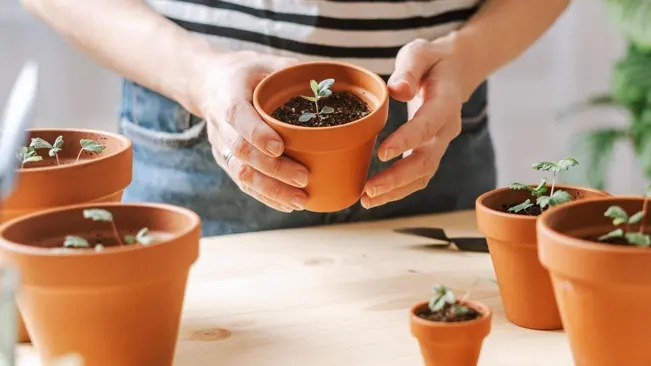
Choosing the Right Variety
There are over 700 species of eucalyptus, each with its own unique characteristics. Some are towering giants, while others are more shrub-like. Popular garden varieties include the Eucalyptus gunnii, Eucalyptus globulus, and Eucalyptus cinerea. Consider the climate, space, and purpose before selecting a variety.
Eucalyptus gunnii (Cider Gum)

- Characteristics: This species is known for its attractive, peeling bark and silvery-blue leaves. It’s a fast-growing tree that can reach considerable heights, but it can be kept smaller through regular pruning.
- Climate Suitability: It’s relatively cold-hardy compared to other eucalyptus species, making it a good choice for cooler climates.
- Uses: Eucalyptus gunnii is often grown for its ornamental value and for flower arrangements. Its leaves can also be used in producing essential oils.
Eucalyptus globulus (Blue Gum)

- Characteristics: Known for its tall stature and distinctive blue-green leaves, this is one of the most widely cultivated eucalyptus trees. It has a fast growth rate and a straight, tall trunk.
- Climate Suitability: It thrives in warmer climates and is less tolerant of cold temperatures compared to Eucalyptus gunnii.
- Uses: It’s commonly used for its timber and for producing eucalyptus oil, which is used in pharmaceuticals, antiseptics, decongestants, and more.
Eucalyptus cinerea (Argyle Apple or Silver Dollar Tree)

- Characteristics: This species is smaller and more manageable in size, making it a popular choice for home gardens. It’s known for its round, silver-blue leaves that are highly aromatic.
- Climate Suitability: It prefers warmer climates but can tolerate mild frosts.
- Uses: Eucalyptus cinerea is popular in floral arrangements and is also grown for its ornamental value.
Factors to Consider When Choosing a Eucalyptus Variety
Climate
Not all eucalyptus species can tolerate cold weather. Choose a species that can thrive in your local climate.

Space Availability
Some eucalyptus species can grow extremely tall. Make sure you have enough space, considering both height and root spread.
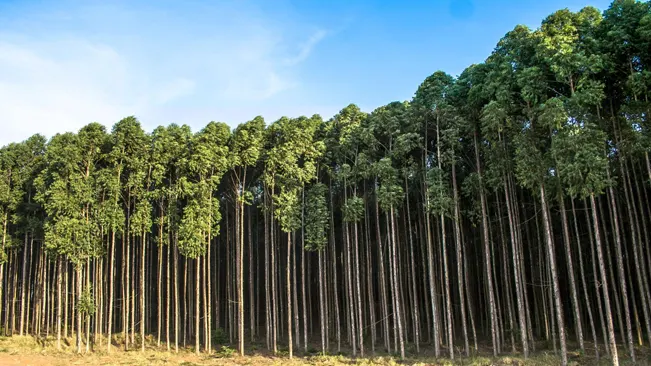
Purpose
Whether you want the tree for its ornamental value, for essential oil, or for its foliage for floral arrangements, the purpose will heavily influence your choice.
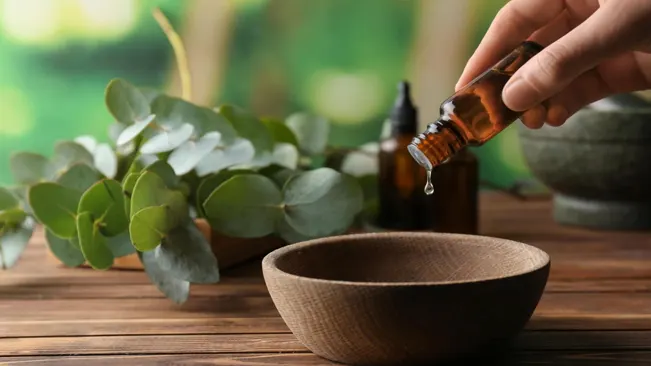
Growth Rate and Size
Some species grow more rapidly and larger than others. If you have limited space or prefer a smaller tree, consider a slower-growing or smaller variety.

- Maintenance Level
Consider how much time and effort you are willing to invest in pruning, watering, and general care. - Soil Type
While eucalyptus is adaptable to various soil types, it’s important to ensure the chosen variety is compatible with the soil in your garden.
Planting Eucalyptus
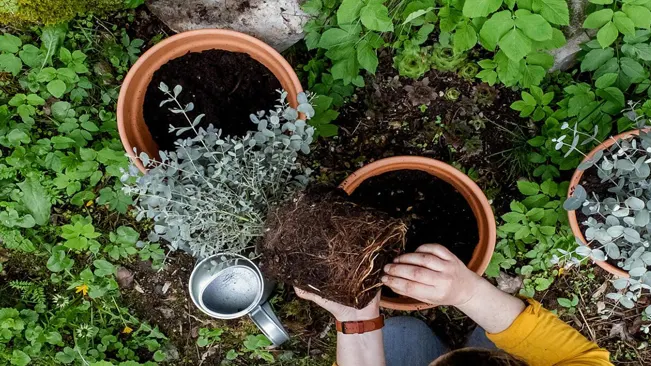
- Root Establishment: Planting in spring or early summer allows the eucalyptus tree to establish its root system during the growing season. This is important as a strong root system helps the tree to absorb nutrients and water more efficiently and provides stability.
- Weather Conditions: Warmer and milder temperatures during these seasons promote better growth and reduce the risk of frost damage, which young eucalyptus trees are particularly sensitive to.
Soil Requirements for Eucalyptus
The right soil conditions are essential for the health of eucalyptus trees:

- Well-Drained Soil: Eucalyptus trees do not tolerate waterlogged conditions, which can lead to root rot. Ensuring that the soil is well-drained helps prevent excess moisture from accumulating around the roots.
- Slightly Acidic to Neutral pH: Eucalyptus prefers a soil pH that is slightly acidic to neutral (around pH 6.0 to 7.5). You can test your soil’s pH and amend it accordingly if it falls outside this range.
- Organic Matter: Amending the soil with organic matter, such as compost or aged manure, can improve soil structure, enhance nutrient content, and aid in water retention and drainage.
Sunlight Needs of Eucalyptus
Sunlight is a vital factor for the growth of eucalyptus trees:
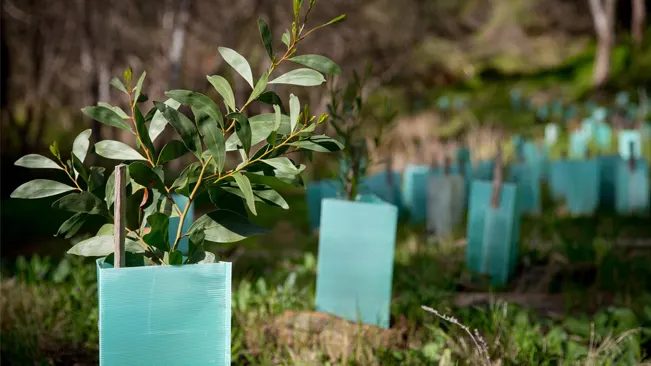
- Full Sun: Eucalyptus requires full sun, which means at least six hours of direct, unfiltered sunlight per day. This is essential for the tree to perform photosynthesis effectively, which is crucial for its growth and health.
- Location: When choosing a location to plant your eucalyptus, look for an area that isn’t overshadowed by buildings or other trees. The more sunlight the tree receives, the better it will grow.
- Consideration for Growth: It’s also important to consider the mature size of the eucalyptus when planting. Ensure it is placed in a location where it will have enough space to grow both upwards and outwards without being hindered by its surroundings.
Watering and Feeding
Watering Eucalyptus Trees
- Initial Watering: Young eucalyptus trees require consistent moisture to establish a strong root system. In the initial stages after planting, it’s crucial to water the trees regularly. This typically means watering deeply once a week, but the frequency can vary depending on soil type, weather, and the specific needs of the tree.
- Observing Soil Moisture: The goal is to keep the soil moist but not waterlogged. It’s important to check the soil moisture before watering. A simple way to do this is to stick your finger about an inch into the soil. If it feels dry at that depth, it’s time to water.

- Adjusting for Maturity and Climate: As the eucalyptus tree matures, its watering needs decrease. Mature eucalyptus trees are notably drought-tolerant, thanks to their deep root systems. In most climates, mature trees can rely largely on natural rainfall, except in prolonged dry spells.
- Avoiding Overwatering: Overwatering is a common mistake that can lead to root rot, a serious condition that can damage or kill the tree. Ensuring proper drainage is vital. If you’re growing eucalyptus in a pot, make sure the container has drainage holes.
Feeding Eucalyptus Trees
- Type of Fertilizer: A balanced, slow-release fertilizer is ideal for eucalyptus trees. Balanced fertilizers contain equal or nearly equal amounts of nitrogen, phosphorus, and potassium (often represented as N-P-K on fertilizer packages).
- Timing: The best time to apply fertilizer is during the spring. This coincides with the beginning of the growing season for eucalyptus, providing the tree with essential nutrients as it enters a phase of active growth.
- Application Method: Follow the instructions on the fertilizer package for application. Generally, the fertilizer should be spread evenly around the base of the tree, extending out to the drip line (the area directly under the outer circumference of the tree’s branches).
- Frequency: Once a year is usually sufficient. Eucalyptus trees are not very high feeders compared to some other garden plants.
- Avoiding Over-fertilization: Excessive fertilization can lead to rapid, weak growth, making the tree more susceptible to pests and diseases. It can also lead to an imbalance in the soil’s nutrient content, negatively affecting the tree’s health.
Pruning
Pruning is vital for controlling the tree’s size and shape, particularly for varieties that can grow quite large. Prune during the tree’s dormant season, removing any dead or diseased branches, and to maintain the desired shape.
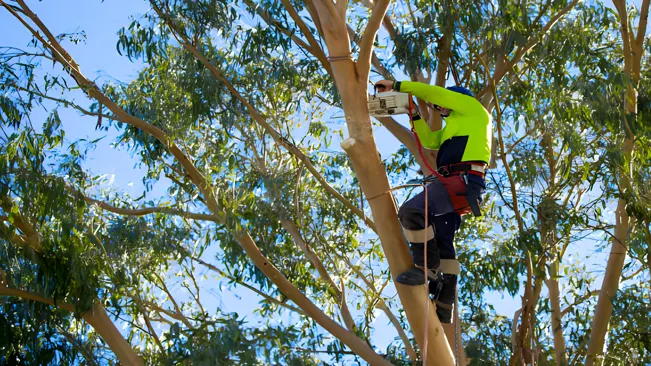
When to Prune Eucalyptus Trees
- The best time to prune a eucalyptus tree is during its dormant season. This is typically in late winter or early spring, before new growth begins.
- Pruning during dormancy minimizes stress on the tree and reduces the risk of infection and infestation by pests.
- The dormant season also makes it easier to see the tree’s structure, as the foliage is less dense.
How to Prune Eucalyptus Trees
- Start by removing any dead, diseased, or damaged branches. This helps prevent the spread of disease and pests.
- Thin out crowded branches to improve air circulation and sunlight penetration throughout the tree. This step is particularly important for eucalyptus trees, as dense growth can lead to fungal issues.
- Cut back overgrown branches to maintain the tree’s shape and size. Remember, eucalyptus trees can grow quite large, and controlling their size is essential, especially in residential areas.
- Make cuts at a slight angle, just above a leaf node or bud, to encourage healthy new growth.
- Avoid heavy pruning in a single session. It’s generally recommended not to remove more than 25% of the tree’s canopy at a time to avoid shocking the tree.
Tools for Pruning
- Use sharp, clean pruning tools. This includes hand pruners for small branches, loppers for medium-sized branches, and a saw for larger branches.
- Sterilize your tools before and after use to prevent the spread of disease.
Safety Considerations
- Eucalyptus trees can grow to be quite tall. For higher branches, it’s safer to hire a professional arborist, especially for large-scale pruning or when dealing with mature trees.
- Always wear protective gear, including gloves and safety glasses, when pruning.
Benefits of Pruning Eucalyptus Trees
- Promotes healthier growth: Pruning removes parts of the tree that are dead, diseased, or competing for resources, leading to a stronger, healthier tree.
- Enhances appearance: Regular pruning helps maintain a desirable shape, making the tree more aesthetically pleasing.
- Prevents hazards: By controlling the size and removing unstable branches, pruning reduces the risk of branches falling and causing damage or injury.
Pest and Disease Management
Eucalyptus can be susceptible to pests like eucalyptus gall wasp and diseases such as eucalyptus rust. Regular inspection and prompt treatment with appropriate pesticides or fungicides can manage these issues.
Common Pests
Eucalyptus Gall Wasp
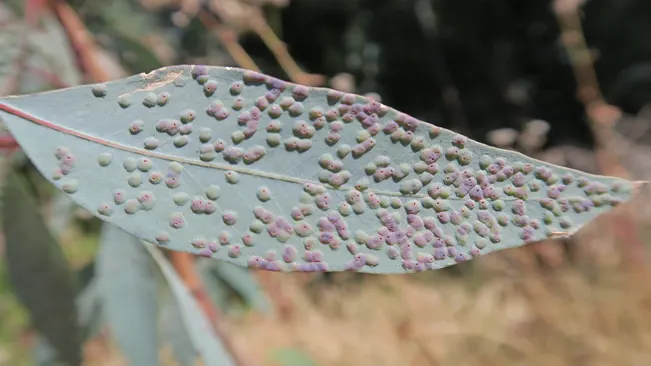
- Description: This pest causes galls (abnormal growths) on leaves, stems, and branches. The gall wasp larvae live inside these galls, feeding on the plant.
- Management: Prune and destroy affected parts of the tree. Biological control methods, such as introducing natural predators of the gall wasp, can be effective. Chemical treatments are often not recommended due to their impact on beneficial insects.
Other Pests:
Eucalyptus can also be attacked by other pests like psyllids, borers, and aphids. Regular monitoring and using insecticidal soaps or oils can be effective against these pests.
Common Diseases
- Eucalyptus Rust (also known as Guava or Myrtle Rust):
- Description: This fungal disease is characterized by bright yellow, powdery spots on leaves, followed by the appearance of pustules. It can cause defoliation and weaken the tree.
- Management: Fungicides can be used, but they are more effective as a preventative measure rather than a cure. Remove and destroy infected plant material to reduce the spread. Ensure good air circulation around the tree to reduce humidity levels.
- Root Rot:
- Description: Often caused by overwatering or poor drainage, root rot can be identified by the yellowing and dropping of leaves and a decayed root system.
- Management: Improving soil drainage and avoiding overwatering are key. Fungicides may help in early stages, but severely affected trees might not recover.
Preventative Measures
- Regular Inspection: Regularly inspect your eucalyptus tree for signs of pests and disease. Early detection is key to effective management.
- Cultural Practices: Good cultural practices such as proper watering, pruning, and ensuring adequate spacing for air circulation can prevent many problems.
- Resistant Varieties: Where possible, choose pest and disease-resistant eucalyptus varieties.
Integrated Pest Management (IPM)
- IPM is a sustainable approach to managing pests and diseases that combines biological, cultural, physical, and chemical tools in a way that minimizes economic, health, and environmental risks.
- This approach might involve using beneficial insects to control pests, employing cultural techniques to prevent diseases, and using chemicals as a last resort.
Harvesting Eucalyptus Leaves
For those growing eucalyptus for its leaves, harvest them when the leaves are mature and fully colored. Use sharp shears and cut the stems at an angle.
When to Harvest Eucalyptus Leaves
- Timing: The best time to harvest eucalyptus leaves is when they are mature, which usually means they have achieved full size and their characteristic color. This typically occurs in late spring to early summer, but it can vary depending on your climate and the specific species of eucalyptus.
- Indicators of Maturity: Mature leaves are often darker and more rigid than young leaves. They also tend to have a stronger aroma, which is a key characteristic of eucalyptus.
How to Harvest
- Using Sharp Shears: Always use clean, sharp shears or scissors for harvesting. Dull or dirty tools can damage the tree and introduce diseases.
- Cutting Technique: Cut the stems at a 45-degree angle. This angle helps in two ways: it prevents water from accumulating on the cut surface, which can lead to rot, and it encourages new growth.
- Amount to Harvest: Be cautious not to over-harvest. As a general rule, do not remove more than 20-30% of the foliage from a young tree, and slightly more from a mature tree. Over-harvesting can stress the tree and affect its growth and health.
Post-Harvest Care
- Handling Leaves: Handle the leaves gently to avoid bruising them, which can lead to loss of essential oils.
- Drying: If you intend to dry the leaves, do it in a well-ventilated, dark place to preserve the oils and prevent the leaves from turning brown. Hang them upside down in bunches or lay them out on a flat surface.
- Storage: Store dried leaves in an airtight container, away from direct sunlight and moisture.
Uses of Harvested Leaves
Aromatherapy and Essential Oils: Eucalyptus leaves are well-known for their strong, pleasant scent and are often used in aromatherapy. The leaves can be used to extract essential oils.
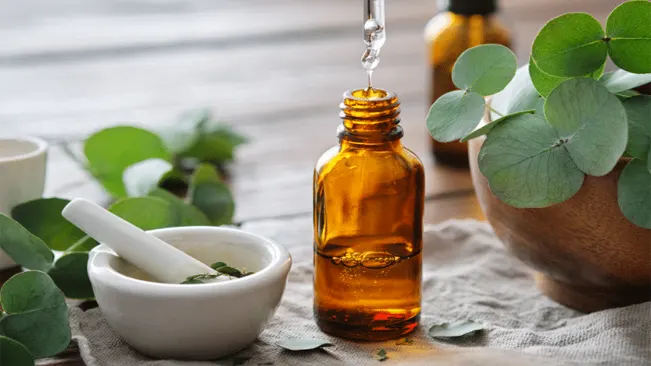
Medicinal Uses: The leaves have medicinal properties and are used in various remedies, particularly for respiratory issues.
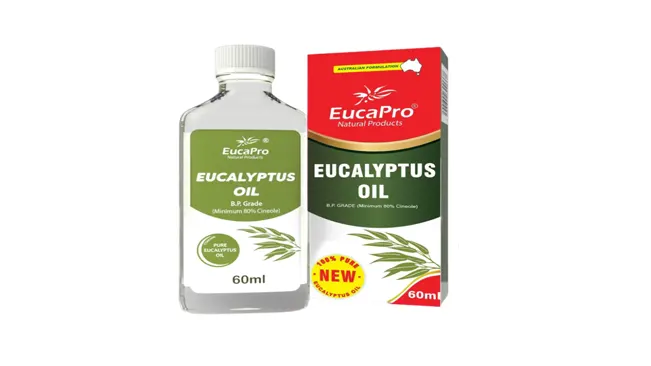
Decorative Purposes: Fresh or dried eucalyptus leaves can be used in floral arrangements and wreaths due to their attractive appearance and long-lasting scent.

Conclusion
Growing eucalyptus can be a rewarding endeavor. With the right conditions and care, these majestic trees can be a stunning addition to any garden. Their unique aroma, beautiful foliage, and the multitude of uses make eucalyptus a fascinating choice for gardeners seeking something a little different.
Remember, the success of growing eucalyptus largely depends on the variety chosen, the climate it’s grown in, and the care provided. With patience and attention, you can enjoy the beauty and benefits of your eucalyptus tree for years to come.
FAQs (Frequently Asked Questions)
1. What is the best time to plant eucalyptus?
The ideal time to plant eucalyptus is during the spring or early summer. This gives the plant ample time to establish its root system before the onset of colder weather.
2. How much sunlight does a eucalyptus tree need?
Eucalyptus trees require full sun, meaning at least six hours of direct sunlight each day. This is crucial for their healthy growth and development.
3. What type of soil is suitable for growing eucalyptus?
Eucalyptus prefers well-drained soil with a slightly acidic to neutral pH. Improving the soil with organic matter can help promote better growth.
4. How often should I water a eucalyptus tree?
Young eucalyptus trees require regular watering to help establish their roots. Once mature, they are quite drought-tolerant. It’s essential to avoid overwatering to prevent root rot.
5. Is it necessary to fertilize eucalyptus trees?
Yes, but sparingly. A balanced, slow-release fertilizer applied in the spring can benefit the tree. However, over-fertilization should be avoided as it can lead to weak and excessive growth.
6. How do I prune a eucalyptus tree?
Prune during the dormant season, focusing on removing dead or diseased branches and shaping the tree. Regular pruning is essential for controlling the size and maintaining the health of the tree.
7. Can eucalyptus trees survive in cold climates?
Some eucalyptus species can tolerate mild cold, but they generally prefer warmer climates. In colder regions, smaller species can be grown in containers and moved indoors, or the trees can be mulched and wrapped for winter protection.
8. Are eucalyptus trees susceptible to pests or diseases?
Yes, eucalyptus trees can be prone to pests like the eucalyptus gall wasp and diseases such as eucalyptus rust. Regular monitoring and appropriate treatment are necessary to manage these issues.
9. How do I harvest eucalyptus leaves?
Harvest eucalyptus leaves when they are mature and fully colored. Use sharp shears to cut the stems at an angle, being careful not to over-harvest which can stress the tree.
10. Can I grow a eucalyptus tree indoors?
Yes, dwarf varieties of eucalyptus can be grown indoors in containers. They still require ample sunlight and proper care similar to outdoor trees. Regular pruning is necessary to keep them at a manageable size.

Kristine Moore
Forestry AuthorI'm Kristine Moore, a seasoned garden landscaping professional with over 30 years of experience. My extensive career has been dedicated to transforming outdoor spaces into stunning, sustainable landscapes. With a deep understanding of horticulture, design principles, and environmental stewardship, I have become a respected figure in the field, known for creating harmonious, visually appealing, and eco-friendly gardens. My commitment to excellence and continuous learning in landscaping trends and techniques has solidified my reputation as an expert in garden design and implementation.
4 comments
Where can I get seeds? It is a all year round tree or it is recommended in a particular season for planting.
Lindiwe
February 22, 2024 12:24 pmWhere can I get seed for eucalyptus tree or what can I use to plant it


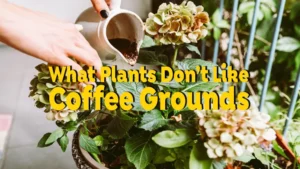



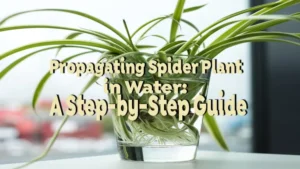
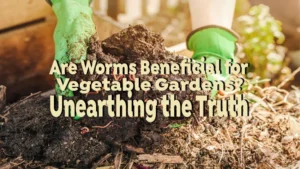
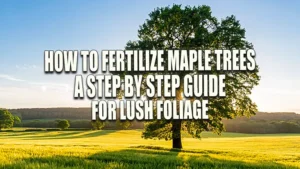

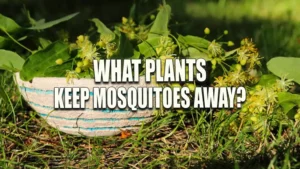


Where can I get seeds? It is a all year round tree or it is recommended in a particular season for planting.
Lindiwe
February 22, 2024 12:24 pmHi Lindiwe! You can buy eucalyptus seeds at garden shops or online. It's ideal to plant them in spring in warm areas for the best growth. Check out Forestry.com for more tips!
Kristine Moore
February 26, 2024 6:31 am